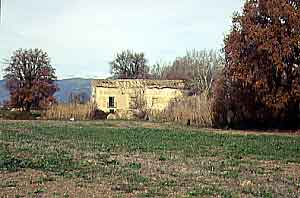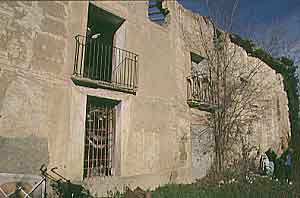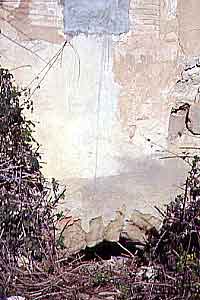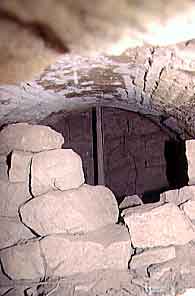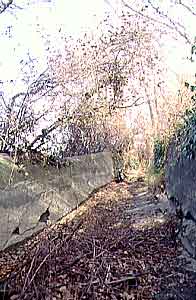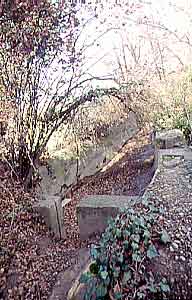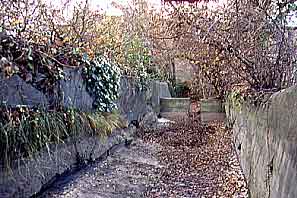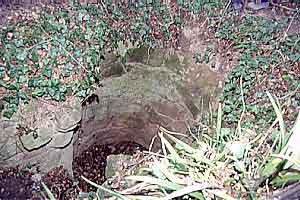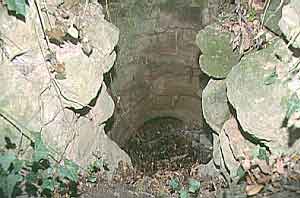Mills in Alto Aragón
Huesca - M. de Morana
Molino de Morana is situated at the outskirts of Huesca city. At the
Convento San Miguel take the
sand road that longs the
Río Isuela. Try to make the correct choice at
branches knowing that the general direction has to be north. It's probably
best to ask when the occasion arises. The mill isn't indicated on any map that is readily available, but we had the luck to be shown the way.
The mill was muy ruinoso at the time of our visit.
Pictures: 29.xii.2002
The mill of Morana is mentioned
in
Pallaruelo where a certain Pedro Simon
in 1613 got the assignment to make and install a mill stone. The name Morana also
pops up in
Naval in connection with the Molino
Cortés built on the same supply channel. The water supply comes
from the
Alberca de Cortés near Chimillas. The
channel longs the Río Isuela and in former times powered several
mills before draining into the Isuela in Huesca. It's currently used for irrigation.
As told, the mill is in a sorry
state. The roof did collaps and the outside walls are the only walls still upright.
The mill proper was the part that we see at the right half of the picture.
The top only of the arch of the cárcavo is visible just above ground level.
We couldn't see much inside but an iron axis. Thus the wheel is probably
also metallic and still in place.
The drain was filled up a long time ago and there is no trace left
of a connection back to the irrigation channel that runs next to the mill.
It is at the backside of the
mill that we got our reward. The
last stretch of the channel is about two meters deep with walls
reinforced with concrete. A small dam is built with a valve making
it possible to stop the current. Few meters earlier a shunt made it
possible to divert the flow around the mill when there was no need to
produce flour.
There is no mill pond.
From the size of the channel it is clear that not having enough
water was not to be a problem. The miller didn't have to wait for hours, sometimes
days, like many of his colleagues. He could run from the tap as it were.
But still, enough pressure was a necessity. The task of building up
enough pressure to move the stones was performed by the pressure pit (cubo
).
This cubo is interesting,
firstly because we don't find that often a mill with a pressure pit, but also because it is kind of an intermediate form of pressure building device. At one end of the range we have the examples from
Las Bellostas and
Nueno
with a very deep and narrow cubo only open at the top and bottom.
At the other end of the scale features the regular balsa where the bottom in one corner drops towards
the saetín without a cubo (most mills on this site).
This cubo is about four meters deep.
But only the lowest half is closed like a normal cubo. The top two meters,
from the bottom of the channel up, are completely open. We can therefore consider
the whole as a balsa (reservoir) with a very deep saetín (inlet). This is sometimes referred to as contrabalsa, although in this case there
is no balsa, only a supply channel.


